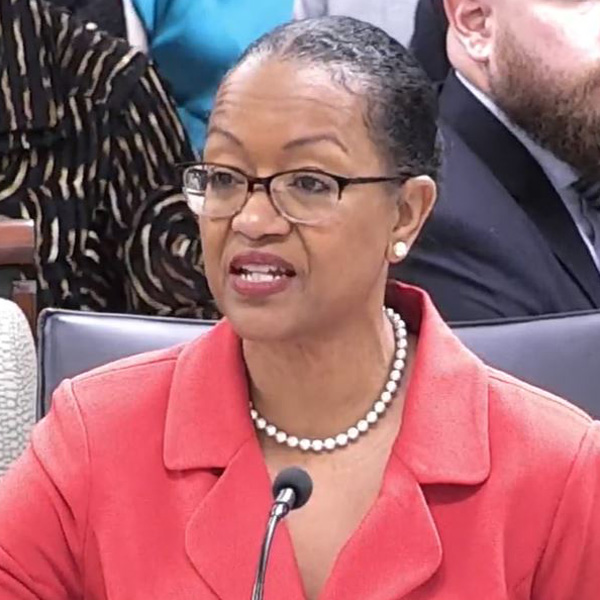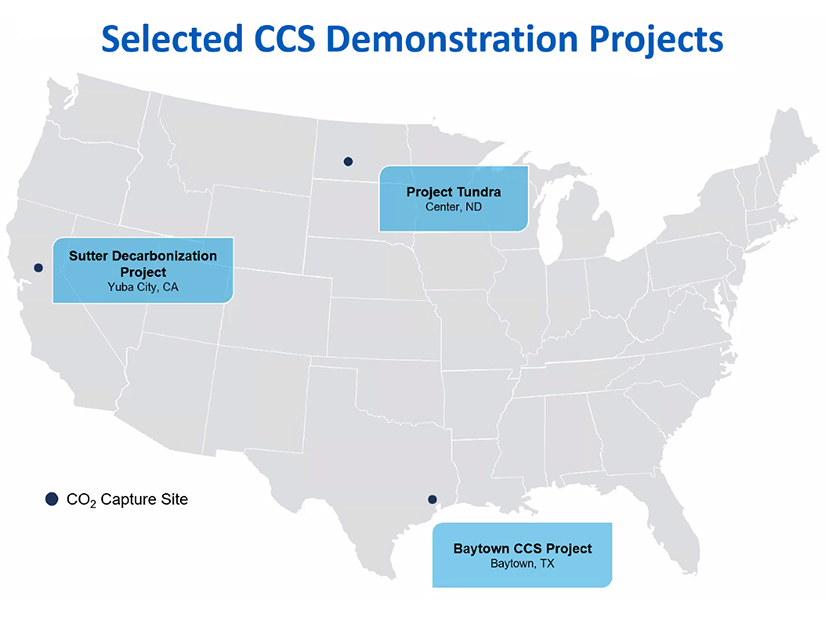A bill before a key New Jersey Senate committee that seeks to accelerate the installation of direct current fast chargers (DCFCs) by giving commercial charger operators a break on rates sparked a battery of concerns over who should pick up the tab.
Developers, electric vehicle advocates and environmentalists expressed concerns about the bill, S3914, in a hearing Dec. 18 of the Senate Environment and Energy Committee. The bill would require electric public utilities to submit new tariffs on commercial charging station operators for approval to the Board of Public Utilities (BPU). It would require the tariffs to be an alternative to “traditional demand-based rate structures.”
The tariffs also would be designed to “establish cost equity between commercial electric vehicle tariffs and residential tariffs” so the entire burden does not fall on the charging station operator. The bill is designed to create an investment environment that would promote third-party investment in electric vehicle (EV) charging technology.
Demand charges are triggered by an unusually high peak in power consumption, at which point the customer is billed an extra rate because the provider must invest more to meet the higher-than-normal power demand. That contrasts with energy charges that determine customer payments based on the amount of power used over a sustained period.
Critics of demand charges in the EV charging environment say charging station operators could end up paying high electricity charges even though the overall use of the charging point is low, a scenario more likely when there are relatively few EVs on the road. That would occur, for example, if three EVs charged at the same station at once, pushing up momentary demand and triggering a relatively high demand charge, even though the site gets little use most of the month.
The committee heard discussion on the bill, but did not vote, in line with the directive in advance of the meeting by Chairman Sen. Bob Smith (D), the bill’s sole sponsor, who sought only to collect public input. The committee is one of the most prominent voices on clean energy in the legislature, which will conclude its business Jan. 8.
Smith, who expects to offer the bill in the next legislative session, said he heard compelling testimony that day that “the places where the high-volume charging equipment is succeeding, and it’s being built in, are areas where there’s a volumetric charge rather than a charge based on the maximum utilization during three minutes of the year.”
Encouraging Charger Investment
Speakers at the hearing took differing positions on how to balance the need to stimulate charging site development with a sense of fairness in deciding who benefits from the installation, and so should help pick up the cost.
The bill requires the new tariffs be shaped to avoid demand charges for commercial customers who own or operate electric vehicle charging systems.
“Rates for electric distribution in the tariff shall be designed to encourage investment in faster, higher-powered electric vehicle charging facilities and shall include comparable costs per megawatt-hour for both higher-power and lower-powered direct current fast charging facilities,” the bill states.
Jigar Shah, head of energy services at Electrify America, a charger development company, welcomed the requirement. He said demand charges are an “additional levy” that effectively mean commercial customers are treated differently than residential customers.
Demand charges originally were designed to set rates on manufacturers who would have high, sustained peaks, rather than the short-term peak of a DCFC charger, Shah said. He said his company’s experience installing chargers has shown that a single charging point with four to six chargers at a New Jersey location could trigger demand charges of more than $350,000 a year.
“The financial risk posed by this is cost-prohibitive to investment in further charging stations in New Jersey,” he said.
Who Benefits From EV Use?
Other speakers expressed concern about the need for equity in who would pick up the tab if demand charges were not used.
Doug O’Malley, director for Environment New Jersey, said the bill fails to clarify how costs will be distributed between customers and ratepayers.
“We do believe that all customers benefit from electrification, not just those that are charging,” he said, in part by reducing electricity rates and curbing emissions.
Because charging benefits the grid overall, he said, costs as a should be borne by the entire rate base. He urged the committee to take time shaping the bill, in part because “usage and consumption patterns for public fast charging is changing pretty significantly.”
The state Division of Rate Counsel, in a Dec. 15 letter to the committee, also expressed concerns about where the cost burden might land. Brian O. Lipman, the division’s director, wrote that the bill “could unfairly shift costs from private businesses responsible for the costs of electricity to all other ratepayer customer classes through higher rates.”
Demand charges are an important part of an electric utility’s rate design, intended to ensure it builds and maintains a “distribution system that is ready to serve the customer’s load at all times,” Lipman wrote.
“If demand charges are waived for certain customers who are putting the greatest demands on the grid, other customers, who use far less electricity, will ultimately pay for them through rate increases.”
Lipman noted that the BPU, recognizing that demand charges play an “important role … in forming just and reasonable rates,” has taken steps to address the issue in connection with EV charger operation. Utilities offer “demand charge rebates” to some customers, and the BPU on Nov. 17 approved a package for Basic Generation Service that allows utilities to implement similar benefits to DCFC customers, he said.
Kassandra Damblu of ChargeEVC New Jersey, an EV advocacy group, said the bill contains no consideration of “who pays for this discounted market structure.” In addition, she said, the rates should be flexible enough to reflect the usage patterns of the equipment over time.
“As chargers get more use, the need for these types of rates decreases, so they should not be considered as a permanent solution, which is the case in this legislation,” she added.

